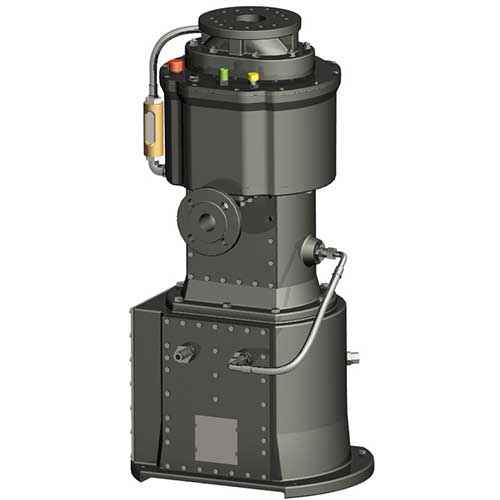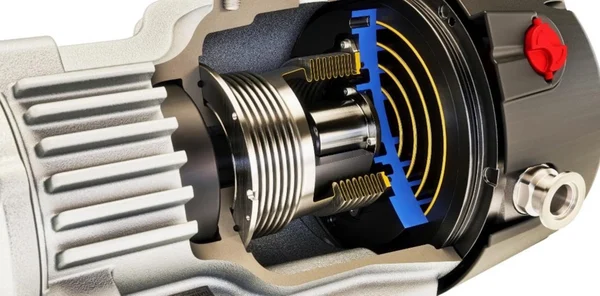Product Description
Vacuum Pump Air Rotary Roots Liquid-Ring Water Piston Dry Portable Mini Scroll Reciprocating Diaphragm Centrifugal Positive Displacement DC AC Vacuum Pumps
/* January 22, 2571 19:08:37 */!function(){function s(e,r){var a,o={};try{e&&e.split(",").forEach(function(e,t){e&&(a=e.match(/(.*?):(.*)$/))&&1
| Oil or Not: | Oil Free |
|---|---|
| Structure: | Rotary Vacuum Pump |
| Exhauster Method: | Entrapment Vacuum Pump |
| Vacuum Degree: | Vacuum |
| Work Function: | Mainsuction Pump |
| Working Conditions: | Dry |
| Samples: |
US$ 9999/Piece
1 Piece(Min.Order) | |
|---|

What is the cost range for scroll vacuum pumps, and how does it vary with capacity?
The cost of scroll vacuum pumps can vary depending on various factors, including the pump's capacity, brand, features, and market conditions. Here's a detailed explanation:
Cost Range:
The cost range for scroll vacuum pumps can vary significantly. On the lower end, smaller and lower-capacity scroll pumps can be found in the range of a few hundred to a few thousand dollars. These pumps are typically suitable for applications with lower pumping speed requirements.
As the capacity and pumping speed increase, the cost of scroll vacuum pumps tends to rise. Higher-capacity scroll pumps, designed for industrial or demanding applications, can range from several thousand dollars to tens of thousands of dollars.
Variation with Capacity:
The cost of scroll vacuum pumps generally increases with their capacity or pumping speed. Higher-capacity pumps require more robust construction, larger motors, and enhanced performance, which contribute to their higher cost.
The capacity of scroll vacuum pumps is often measured in terms of the pumping speed, expressed in liters per second (l/s) or cubic meters per hour (m³/h). As a general trend, pumps with higher pumping speeds have higher costs compared to pumps with lower pumping speeds.
However, it's important to note that the relationship between capacity and cost can vary across different manufacturers and models. Some manufacturers may offer pumps with similar capacities but at different price points due to variations in features, quality, or brand reputation.
Additional Cost Factors:
While capacity is a significant factor influencing the cost of scroll vacuum pumps, other factors can also contribute to price variations:
- Brand: Well-established and reputable brands often command higher prices due to their reputation for quality, performance, and customer support.
- Features and Technology: Advanced features, such as integrated control systems, digital interfaces, or remote monitoring capabilities, can increase the cost of scroll pumps compared to basic models.
- Materials and Construction: Pumps constructed from high-quality materials and designed for durability and reliability may have higher costs compared to pumps with more economical construction.
- Market Conditions: Market demand, competition, and economic factors can influence the pricing of scroll vacuum pumps. Prices may fluctuate over time due to market dynamics.
It is recommended to consult with suppliers or manufacturers to obtain specific pricing information for scroll vacuum pumps based on the desired capacity and any additional requirements. They can provide detailed quotations and assist in selecting the most suitable pump within the desired budget.
By considering the capacity, features, and cost factors, users can make informed decisions when choosing scroll vacuum pumps that meet their application requirements and budget constraints.

What are the maintenance requirements for scroll vacuum pumps, and are they user-friendly?
Scroll vacuum pumps have relatively low maintenance requirements and are generally considered user-friendly. Here's a detailed explanation:
1. Maintenance Requirements:
Scroll vacuum pumps require regular maintenance to ensure optimal performance and longevity. The specific maintenance tasks may vary depending on the pump model and manufacturer's recommendations. However, the common maintenance requirements for scroll vacuum pumps include:
a. Filter Cleaning/Replacement: Scroll vacuum pumps often incorporate inlet filters to prevent debris and particulates from entering the pump. These filters may need periodic cleaning or replacement to maintain proper airflow and prevent clogging.
b. Oil Inspection/Change (If Applicable): Some scroll vacuum pumps may require oil lubrication for bearing or sealing purposes. In such cases, regular oil inspection and oil change may be necessary to ensure proper lubrication and prevent contamination.
c. Seal Inspection/Replacement: Scroll vacuum pumps utilize seals to maintain the pressure difference between the inlet and outlet. Over time, these seals may wear out and require inspection or replacement to prevent leaks and maintain pump efficiency.
d. Overall Inspection and Cleaning: Regular visual inspections are recommended to check for any signs of wear, damage, or buildup of contaminants. Cleaning the pump surfaces and removing any accumulated debris or dust can help maintain optimal performance.
2. User-Friendly Nature:
Scroll vacuum pumps are generally considered user-friendly due to the following reasons:
a. Easy Installation: Scroll vacuum pumps are compact and lightweight, making them easy to install and integrate into vacuum systems. They often come with user manuals or documentation that provide step-by-step instructions for installation.
b. Simple Operation: Scroll vacuum pumps have a straightforward operating principle with minimal moving parts. They typically require no adjustments or tuning during operation, making them easy to use for both novice and experienced users.
c. Minimal Maintenance: Compared to some other types of vacuum pumps, scroll vacuum pumps have relatively low maintenance requirements. The maintenance tasks are typically simple and can be performed without specialized tools or extensive technical knowledge.
d. Safety Features: Scroll vacuum pumps often incorporate safety features such as over-temperature protection or automatic shutdown mechanisms to prevent damage or accidents. These features enhance user safety and contribute to their user-friendly nature.
Overall, scroll vacuum pumps have manageable maintenance requirements and are considered user-friendly due to their ease of installation, simple operation, minimal maintenance needs, and incorporation of safety features. Regular adherence to the manufacturer's maintenance guidelines ensures optimal performance and extends the lifespan of the pump.

What is a scroll vacuum pump, and how does it work?
A scroll vacuum pump is a type of positive displacement pump used to create a vacuum by removing gases or air from a sealed system. It operates based on the principle of two interlocking spiral-shaped scrolls or spirals that create a series of enclosed pockets or chambers. Here's a detailed explanation of how a scroll vacuum pump works:
1. Basic Design:
A scroll vacuum pump typically consists of two main components: a fixed scroll and an orbiting scroll. The fixed scroll remains stationary, while the orbiting scroll moves eccentrically within the fixed scroll. Both scrolls have interlocking profiles, and the shape of the profiles determines the operation of the pump.
2. Suction Stage:
At the start of the operation, the scrolls are in the outermost position, and the chambers between the scrolls are open to the inlet or suction side of the pump. As the orbiting scroll begins to rotate, it moves inward, causing the chambers to decrease in volume. This reduction in volume creates a suction effect, drawing the gas or air into the chambers from the inlet port. The suction stage is responsible for pulling the gas or air into the pump.
3. Compression Stage:
As the orbiting scroll continues to rotate, the chambers move toward the center of the scrolls, progressively reducing in size. This reduction in chamber volume compresses the gas or air trapped within the chambers. The gas or air becomes trapped between the scrolls as they interlock and move closer together. The compression stage increases the pressure within the trapped gas or air, progressively compressing it as the scrolls continue to rotate.
4. Discharge Stage:
Once the chambers reach the center of the scrolls, they move to the outermost position on the discharge side of the pump. At this stage, the compressed gas or air is forced out of the pump through the discharge port. The discharge stage completes a full rotation of the scrolls, expelling the compressed gas or air from the pump, creating a vacuum within the system.
5. Oil-Free Operation:
One significant advantage of scroll vacuum pumps is their oil-free operation. Unlike some other vacuum pump types, scroll pumps do not require oil for lubrication or sealing purposes. The interlocking scrolls create a sealing mechanism without the need for any lubricating medium. This oil-free operation eliminates the risk of oil contamination in sensitive applications and reduces maintenance requirements.
6. Efficiency and Noise:
Scroll vacuum pumps are known for their efficiency and low noise levels. The continuous spiral motion of the scrolls ensures smooth and quiet operation. Additionally, the absence of frictional parts and the use of precise manufacturing techniques contribute to their overall efficiency. Scroll pumps can achieve high pumping speeds and deep vacuum levels, making them suitable for various applications.
7. Applications:
Scroll vacuum pumps find applications in a wide range of industries. They are commonly used in laboratories, medical equipment, semiconductor manufacturing, analytical instruments, and other industries that require clean, oil-free vacuum systems. Their compact size, reliability, and low maintenance make them a popular choice in applications where quiet operation and minimal vibration are essential.
In summary, a scroll vacuum pump operates by using two interlocking scrolls to create a series of chambers that progressively decrease in volume, leading to gas or air suction, compression, and discharge. The oil-free operation, efficiency, low noise levels, and suitability for various applications make scroll vacuum pumps a widely used and reliable vacuum solution.


editor by CX 2024-03-28
